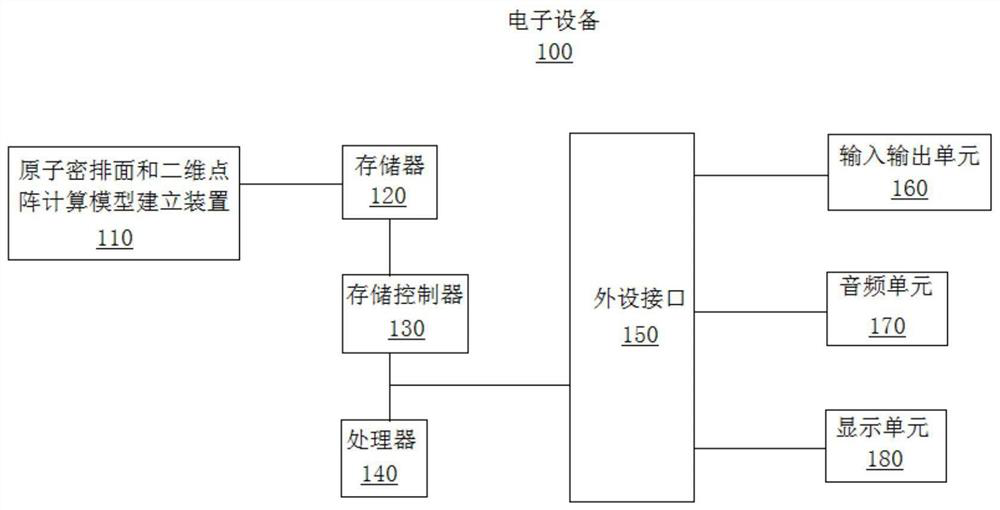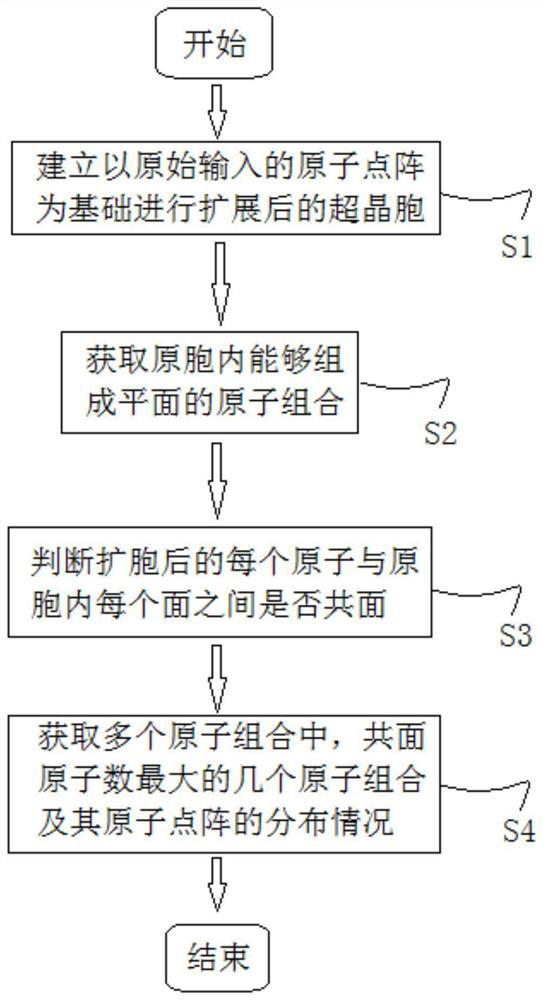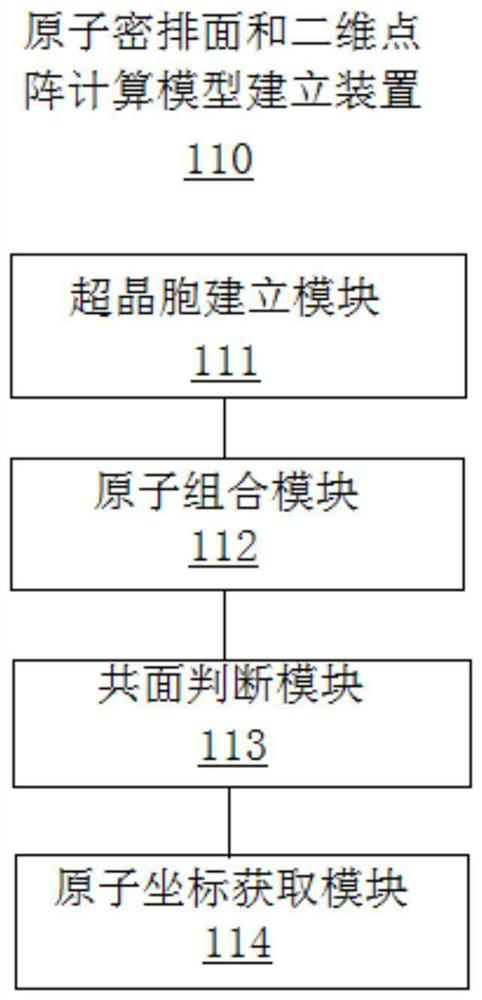Calculation method and device for atom close-packed surface and two-dimensional dot matrix
An atomic lattice and calculation method technology, applied in computational theoretical chemistry, computer material science, instruments, etc., can solve the problems of atomic close-packed surface and two-dimensional lattice without calculation method, and achieve the effect of wide applicability
- Summary
- Abstract
- Description
- Claims
- Application Information
AI Technical Summary
Problems solved by technology
Method used
Image
Examples
Embodiment 1
[0089] This embodiment provides a calculation method for an atomic close-packed surface and a two-dimensional lattice, including the following steps:
[0090] Step S1: Input the number N of atoms in the original unit cell, the atomic coordinates converted into space coordinates in all unit cells in the input unit cell, the lattice constant value and axis angle of the relevant phase, and the expansion factor of the input unit cell , so as to establish the expanded supercell based on the original input atomic lattice.
[0091] Step S2: After constructing the N atoms of the original unit cell into (N×(N-1)×(N-2)) / 6 different faces by means of permutation and combination, the original unit cell is judged by Heron’s formula Whether any three points are collinear, and the combination of three collinear points is screened out, and through iterative calculation, it is obtained that among the N atoms in the original cell, every three atoms constitute a plurality of coordinate combinati...
Embodiment 2
[0095] This embodiment provides a structural block diagram of an atomic close-packed surface and two-dimensional lattice calculation model building device 110, which includes:
[0096] The supercell building module 111 is used to build the expanded supercell based on the original input atomic lattice;
[0097] The atomic combination module 112 is used to obtain the atomic combination that can form a plane in the original cell based on the original input atomic lattice;
[0098] Coplanar judging module 113, for judging whether each atom in the expanded supercell is coplanar with each face in the original cell;
[0099] The atomic coordinate acquisition module 114 is used to acquire the atomic combinations with the largest and / or close to the largest number of coplanar atoms among all the atomic combinations in the supercell and the distribution of their atomic lattices.
[0100] Further, the supercell building module 111 is used to input the number N of atoms in the crystal un...
PUM
 Login to View More
Login to View More Abstract
Description
Claims
Application Information
 Login to View More
Login to View More - R&D
- Intellectual Property
- Life Sciences
- Materials
- Tech Scout
- Unparalleled Data Quality
- Higher Quality Content
- 60% Fewer Hallucinations
Browse by: Latest US Patents, China's latest patents, Technical Efficacy Thesaurus, Application Domain, Technology Topic, Popular Technical Reports.
© 2025 PatSnap. All rights reserved.Legal|Privacy policy|Modern Slavery Act Transparency Statement|Sitemap|About US| Contact US: help@patsnap.com



